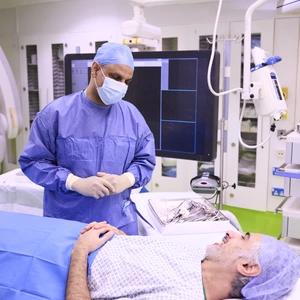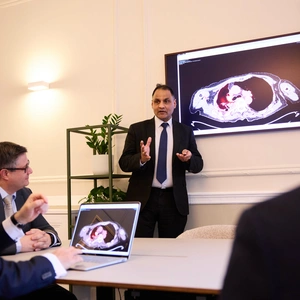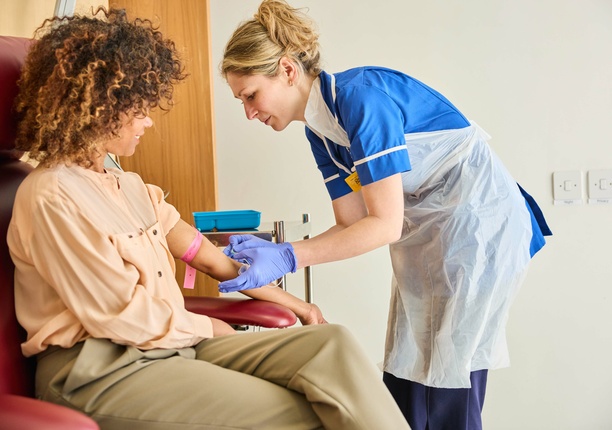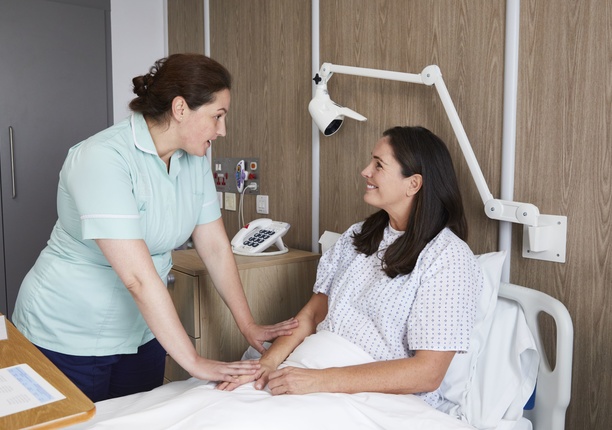Radiofrequency ablation (RFA) and cryoablation
Radiofrequency ablation (RFA) uses heat to destroy cancer cells, while cryoablation freezes them. At The London Clinic Lung Centre, our world-leading consultants are highly experienced in using both techniques to treat lung cancer.
RFA and cryoablation FAQs
All medical procedures come with a risk of side effects, and RFA and cryoablation are no different. Overall, however, the risk of complications is very low.
The side effects of these procedures may include:
- Bleeding
- Mild levels of pain in the treated area
- Flu-like symptoms and a fever
- Infection
- Damage to the tissue surrounding the tumour
If you’re experiencing any of the symptoms above after your procedure, you should contact your care team who can provide personalised advice.
Because RFA and cryoablation target the tumour directly, they limit any damage to healthy tissue. As a result, both procedures lead to a quicker recovery and a lower risk of side effects compared to less localised treatments.
As you will have received either a general or local anaesthetic, you should not feel any pain during the procedure. If you have had a local anaesthetic and are not fully asleep, you may simply feel a slight tingling sensation in the area being treated.
Step 1. Preparing for RFA or cryoablation
Prior to your treatment, your care team will review your current medications and advise you on any that you should stop taking in advance. These may include:
- Aspirin
- Non-steroidal anti-inflammatory drugs (NSAIDs)
- Blood thinners
You will have an appointment about a week before the procedure, during which your care team will assess your overall health to ensure you are ready. This may include blood tests to check your liver and kidney function, as well as your blood’s ability to clot.
At a certain time, either the night before or the morning of your procedure, you will be asked to stop eating and drinking. On the day, you will simply need to arrive prepared for an overnight stay at the clinic, with a bag containing anything you may need to be comfortable.
Step 2. During RFA or cryoablation
You will either be given a local anaesthetic and a sedative, which will make you feel very sleepy, or a general anaesthetic, which will put you completely to sleep.
Your consultant will then use either an ultrasound or a computed tomography (CT) scan to guide the needle through your skin and into the tumour. The treatment will typically last 30–90 minutes, depending on the size and location of the tumour. The entire procedure usually lasts between one and three hours.
Once the treatment is complete, your consultant will remove the needle and cover the area with a dressing. You will also have a chest X-ray to ensure the lung has not collapsed during the procedure (pneumothorax).
Step 3. Recovery and aftercare
Depending on what time you have your procedure, you will either need to stay in bed for a few hours afterwards or remain in the hospital overnight. This is so you can recover from the anaesthetic and be monitored to ensure you are not experiencing any immediate complications, such as bleeding.
Post-procedure, you may experience mild discomfort, fatigue or a fever. However, this will usually resolve within a few days. You will be able to start eating and drinking as soon as you are awake.
You should avoid strenuous activity for a few days after the procedure. Following advice from your consultant, you will be able to gradually return to your normal activities. However, if you experience any unusual symptoms, such as severe pain, a continued fever or difficulty breathing, you should inform your care team as soon as possible.
A follow-up scan will be scheduled a few weeks after the procedure to assess how well the cancer is responding to the treatment.





